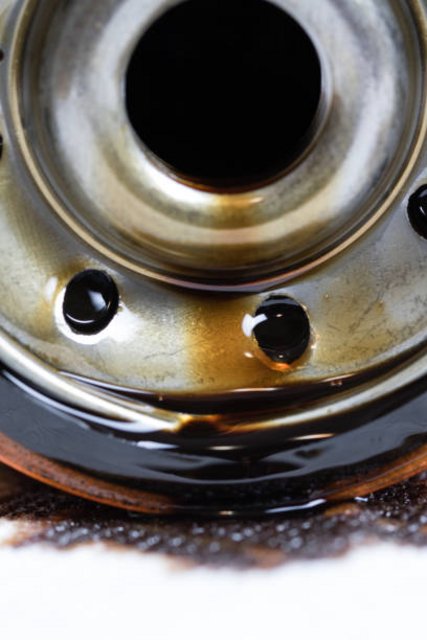
It's a bad thing to experience the head seal blowing. This is very unfortunate news. If your car may be failing, you must pay immediate focus. The head gasket could fail in in a variety of methods, that we have discussed in recent times and which all could be bad for your engine. A bad head gasket can be detected by an odorless, white cloud that is visible behind you every moment of the time.
Head gaskets can be faulty.
Gaskets for the head usually fail due to the space between the head and engine has expanded and they are unable to close it. The problem is exacerbated in motors that have an aluminum head and iron cylinder block. Additionally, some motors have been constructed with weak clamping forces through the head bolts or with a head that is susceptible to warping, and are known for their failure.
A gasket that is not functioning properly can lead to a variety of issues, for example:
1) Overheating
A head gasket failure may be caused by the engine being overheated many times (as due to a clogged radiator, leak of coolant, faulty fan, etc. ), but a blown head gasket will also cause the engine to overheat too. The hot exhaust gases could leak through the coolant system or coolant may be leaking into the cylinders, and be burned off as steam. Regardless, the end result is an engine that is overheated.
The blown head gasket repair cost can be increased substantially if the vehicle too hot. Steam can cause damage to catalytic converters or the heads of the alloy cylinders.
2) Loss Of Power
In the event that the head gasket breaks to the point that it permits the fuel and compressed air to escape, the compression in the cylinder decreases. It will be rough to operate and power levels are reduced. The most common cause of this type of problem will be accompanied by an audible sound like it is a leak in the exhaust.
3) Oil Contamination
The milky sludge that appears on the cap of the oil dipstick is a sign of a head gasket that has failed. Sometimes, it's referred to as "milkshake" in jest. This is caused by cooling fluid leaking into the oil and the reverse. It's not a conclusive proof that the head gasket failed, but it is an indicator. Your engine should be disassembled to determine where contamination originates.
Every driving activity can cause damage to the bearings on the engine when the antifreeze contained within the oil has been contaminated. The Blown Head Gasket Fix, requires changing the oil, an oil filter replacement and sometimes a complete engine deconstruction to be sure that the bearings aren't damaged, and all oil has been removed.
4) White Smoke
This is caused by a faulty gasket. The cause is antifreeze leaking past the gasket into cylinders where it gets turned to steam as part of the combustion process. A less common, though possible, is a leak from an oil passage to the cylinder, which would cause blueish smoke.
This kind of malfunction can let combustion enter your cooling system or an oil-breathing system. This may be the reason why a radiator water outlet disappears suddenly or the dipstick isn't on its own.
5) External Leaks
If a head gasket has failed between the water or oil passageway and the outside of the engine, it could result in a simple coolant or oil leak. It's the least serious scenario of a blowing head gasket but it is still dangerous.
The issue may not be apparent as an immediate problem (other than causing chaos) however should the coolant level be permitted to fall too much this could lead to severe engine problems. Leaks in oil may also lead to burning fumes or even ignite if it gets on hot exhaust.
Preventing Head Gasket Problems
A few dollars of prevention is better than the several thousand dollars of treatment when it comes in head gaskets. Even though replacing a head gasket is relatively affordable, the labor-intensive repairs required to replace it can significantly increase the cost blown head gasket cost, particularly in the case of newer vehicles.
The main cause for head gasket issues is frequent running into overheated or smoldering. To avoid this from happening check that your cooling system is working properly. If your car starts to heat up, it is best to stop it, let it cool for an hour and replenish the radiator.
It is simple to check the cooling system: Make sure there's no leaks. Also, make sure your thermostat is set to open, and that coolant has been topped off at the right amount. Check that either the electric or mechanical fan is running with all of the blades. The fan should also be fitted with an shroud for efficiency.
If you suspect that your head gasket has failed, the scientific test is to check for combustion gasses inside the cooling system. The test shows whether there's a loss of compression in the cooling system and therefore, if a head gasket has failed. The old method is to unclip the radiator cap and start the vehicle and then check for bubbles.
Blown Head Gasket Repair of gases in the cooling system will not tell you whether the head seal is in good condition.
Older head gaskets may fail due to a lack of strength and poor design. Gaskets made of metal had a higher risk of failure, as they could only withstand so much time of being heated up and then cooled down. Today, modern MLS (multiple layer steel) gaskets that are replacements are available for most applications, they are more reliable than the gasket model that was originally used.
